solid hardwood vs. engineered hardwood
kmoriarty25
5 years ago
Featured Answer
Sort by:Oldest
Comments (21)
Kirsten E.
5 years agoMilo Pompeii
5 years agoRelated Discussions
Hardwood floor vs. engineered hardwood?
Comments (27)Choosing the right flooring type isn't enough for your living condition. You will have to consider the types of cut: flat sawn, rift and quarter sawn, quarter sawn or live sawn. Quarter sawn and rift & quarter sawn will be best choices, because expansion and contraction is along the thickness of the wood. You will need climate control all year round. 70 degrees at 40 % relative humidity is where you want to be throughout the year. The use of a humidifier/dehumidifier will be needed year round. Although, engineered flooring is more stable than solid. Using the wrong wood specie in your living condition can run the risk of de-laminating with engineered wood. If, the top veneer is more or less stable than it's core and backing. You will experience de-laminating in extreme humidity swings. Take in account of what the engineered flooring is constructed of: mdf or plywood. The width of the flooring will account for how much expansion and contracting also. 2 1/4" strips are the most stable. As you go wider, expect to see more wider seasonal gaps. Proper acclimating is critical, should be performed with a moisture meter. For 2 1/4" strip flooring , sub-floor and flooring moisture should be within 4%. For all other widths 2% moisture differentiation is allowed or should not be exceeded. Don't forget proper expansion gaps, which is the thickness of your flooring, example: 3/4" thick = 3/4" gap. Sub-floor type and condition will affect the performance of wood floors. All this needs to be considered for the proper and successful performance of your wood floors....See Morehardwood vs engineered hardwood vs vinyl?
Comments (9)Definitely choose wood. Vinyls are great, however, for resale value, wood is the absolute best ROI especially for the main living areas. You can choose an engineered or solid- whichever makes most sense. We are able to provide engineered HW that can be sanded and refinished just as many times as solid. If the wear and tear is something you are worried about, consider choose a floor that has a reclaimed look with a strong grain pattern and saw markings that can hide many of the scratches and discrepancies that will happen over time. If that specific design isn't your style, consider a light color floor. Oiled floors are a decent choice because fixing superficial scratches are relatively easy. Oaks are good because of their graining and if kept a light color- will be able to disguise many of the scratches. You can ALWAYS sand and refinish your floors a few years down the line if needed. Plus, when you go to sell and the floors have been lived on- they can be sanded and finished for the new buyer. A vinyl floor will need to be replaced. Hardwood is more expensive at the moment, but they actually end up paying for themselves years down the line with the proper care and maintenance. Or you can choose wood in the dining and great room and a tile in the kitchen. SJ McCarthy has a good recommendation for hickory and oak. Another option is Character Maple(make sure it is hard maple). If you really want to be bold- go for Brazilian Pecan. :)...See Morehardwoods vrs engineered hardwoods
Comments (4)As ever, the answer will be found in your choice of product and the value of your home. And location. And install....and...and...and...Sigh. You get the point. In an area where engineered hardwood is the NORM (Mississippi flood plain), then it would be unusual to see solid hardwood (and if you know anything about flooring it would be a MASSIVE worry for the next home owner). If you are in an area where solid hard woods are de rigueur then engineered hardwoods *might pose a concern...but might not. The actual value of your home is something to consider as well. For instance a $1.4M home in NE USA would be a place you would EXPECT to see solid hardwood (and something stunningly beautiful at that!). A $3.99/sf Home Depot product installed into a mansion in Boston would be a poor investment choice. The revers is also true. A $200K home in the middle of nowhere would not benefit from a $15/sf solid European Oak hardwood. The amount of money put into the floors would never be recovered with resale....See MoreSolid hardwood downstairs only or engineered hardwood throughout?
Comments (4)I too cannot see the savings of remove+replace. A sand/refinish averages $5/sf. It is minimally disruptive (ie. it does NOT involve demolition) and it will cure in 10 days (assuming you are using a high-end water based finish). Now an engineered hardwood is SUPPOSED to be more expensive than solid. Yah. I said it. Engineered (same cut, width, thickness, installation method) should be more expensive than solid. Hmmmmmm. My spidy senses are tingling. Now on to the cost of hardwood upstairs. Carpet removal/disposal = $1.50 - $2/sf (depends on where you live). Repair and prepare the wooden subfloors (usually 'bad' underneath carpet...carpet hides the WORST subfloors) $2-$4/sf. Yep. Just ASSUME you will be spending $3/sf for the subfloor prep upstairs. Now for the cost of solid hardwood (regular 3" width) = $5/sf. Installation + finishing = $3-$4/sf. Right. A regular solid hardwood (nothing special) with install = $8 - $10/sf. Now compare that to a 'sand and refinish' of $5/sf. Wow. It is CHEAPER to do the sand and refinish. Hmmmm. Now imagine the COST of demolition for the HARDWOOD....yep. You can add MORE to that cost. And again the subfloors have to be looked at. More costs. Now imagine the cost of a MORE EXPENSIVE engineered hardwood....$8 - $12/sf for material only. Installation is extra ($3-$4/sf for factory finished hardwood). I tell ya. The $5/sf sand/refinish is looking REALLY GOOD right now. Ignore the width of the planks. They are classic and are probably appropriate for the age of the home. It is your money and your home. If you believe an engineered hardwood is CHEAPER than $5/sf sand and refinish (including install and subfloor preparation) then you are welcome to find out the reality of the situation. We are going to tell you the 'cheap' wide plank engineered hardwood is not going to give you the 'life expectancy' that a 'regular' 3" wide solid hardwood ($5/sf material). It just won't....See MoreExpress Flooring
5 years agofloorfreak
5 years agokmoriarty25
5 years agofloorfreak
5 years agokmoriarty25
5 years agofloorfreak
5 years agokmoriarty25
5 years agoRupali k
5 years agofloorfreak
5 years agoRupali k
5 years agokmoriarty25
5 years agoSJ McCarthy
5 years agozaccaii
5 years agoOak & Broad
5 years agoKirsten E.
5 years agoOak & Broad
5 years agoRick Benak
4 years agoSarah Lovestad
last year
Related Stories
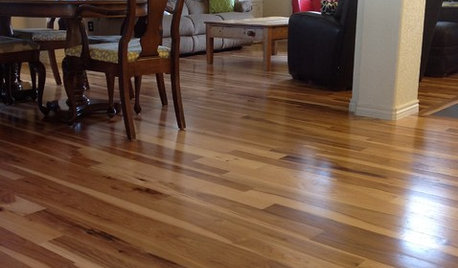
MATERIALSWhat to Ask Before Choosing a Hardwood Floor
We give you the details on cost, installation, wood varieties and more to help you pick the right hardwood flooring
Full Story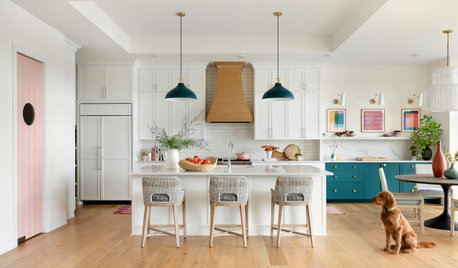
HOUSEKEEPINGHow to Clean Hardwood Floors
Gleaming wood floors are a thing of beauty. Find out how to keep them that way
Full Story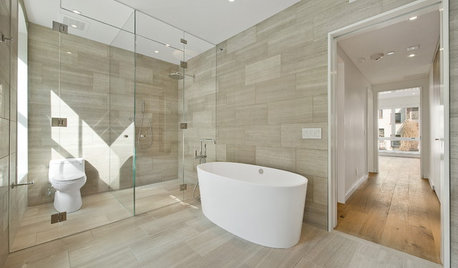
REMODELING GUIDESTransition Time: How to Connect Tile and Hardwood Floors
Plan ahead to prevent unsightly or unsafe transitions between floor surfaces. Here's what you need to know
Full Story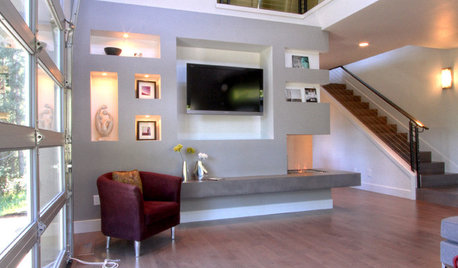
REMODELING GUIDESContractor Tips: Smooth Moves for Hardwood Floors
Dreaming of gorgeous, natural wood floors? Consider these professional pointers before you lay the first plank
Full Story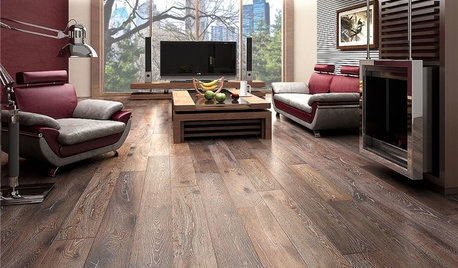
REMODELING GUIDESWhen to Use Engineered Wood Floors
See why an engineered wood floor could be your best choice (and no one will know but you)
Full Story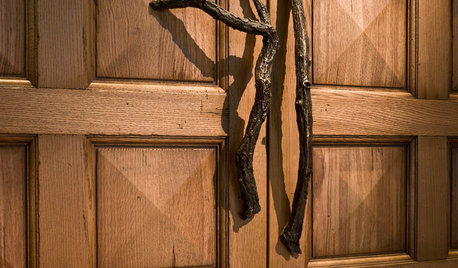
WOODWoodipedia: Make a Solid Choice With Oak
Forget those low-end products of old. Red and white oak today are beautiful, versatile and relatively inexpensive
Full Story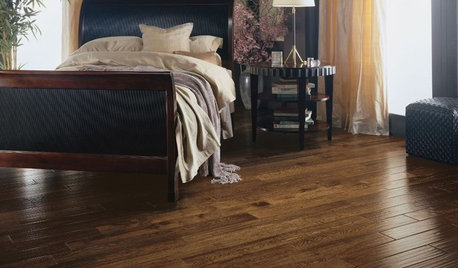
REMODELING GUIDESYour Floor: An Introduction to Solid-Plank Wood Floors
Get the Pros and Cons of Oak, Ash, Pine, Maple and Solid Bamboo
Full Story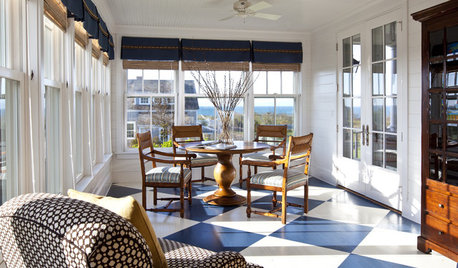
FLOORSHow to Paint Your Hardwood Floors
Know how to apply nail polish? Then you can give your wooden floors a brand-new look
Full Story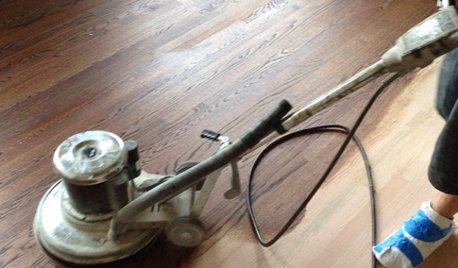
GREAT HOME PROJECTSWhat to Know Before Refinishing Your Floors
Learn costs and other important details about renewing a hardwood floor — and the one mistake you should avoid
Full Story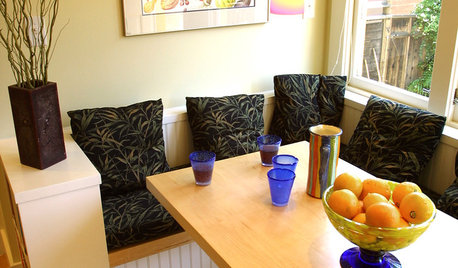
MATERIALSWoodipedia: Maple Is a Marvel Around the House
A heavy hardwood with lots of potential, maple appeals to modern sensibilities and won't break your budget
Full StorySponsored
Columbus Area's Luxury Design Build Firm | 17x Best of Houzz Winner!



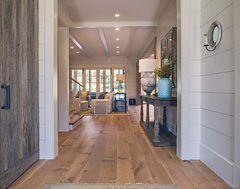


Oak & Broad